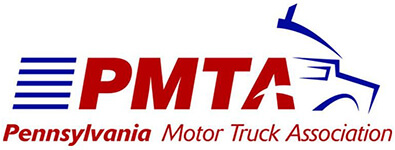OOS statistics are in on English Language Proficiency
Under Title 49, Subtitle B, Chapter III, Subchapter B, Section 391.11(b)(2), a driver is only qualified to operate a commercial motor vehicle (CMV) if they:
"Can read and speak the English language sufficiently to converse with the general public, to understand highway traffic signs and signals in the English language, to respond to official inquiries, and to make entries on reports and records."
This regulation has been on the books for years, but enforcement is now increasing—and the early numbers are eye-opening.
Enforcement in Action
Depending on your perspective, the early enforcement data may be either deeply concerning or a sign of overdue accountability. Although some states have delayed implementation, FMCSA and its enforcement partners are actively placing drivers Out-of-Service (OOS) during roadside inspections if they are unable to demonstrate sufficient English language proficiency.
Year-to-date (YTD) 2025, the top driver-related OOS violation is “Operating a CMV without a CDL,” with 11,554 instances, an OOS rate of 8.01%, and an average of 52.76 violations per day.
By contrast, the English proficiency regulation—enforced in earnest only since late June—has already resulted in 1,212 violations, with an OOS rate of 0.84% and an average of 28.19 per day. Projected across a full year, this trend suggests we could see over 10,000 violations annually. That’s a significant number, especially considering this is not currently the most aggressively enforced regulation.
Industry Lagging Behind Enforcement
Enforcement has clearly shifted—but many in the industry have yet to catch up. It is the responsibility of motor carriers to ensure their drivers meet the English language proficiency standard, not just to comply with regulations, but to ensure safety and effective communication, particularly with law enforcement and first responders.
At a recent Industry Roadside Inspection Vehicle Requirements Training Course in Austin, TX, CVSA instructors emphasized the critical importance of driver communication. While inspections may feel routine to carriers, they are high-risk situations for inspectors. Consider this: an inspector is crawling beneath a vehicle during a Level I inspection, trusting that the driver will not move or start the vehicle without explicit instruction. Those instructions are given in English. If the driver doesn’t understand them, the results could be catastrophic.
Lack of intent will not prevent a tragic outcome.
What Happens When Communication Fails
Inspectors have discretion to decline conducting a full inspection if they feel a driver cannot be trusted to follow basic safety directions due to a language barrier. In such cases, the driver is placed Out-of-Service immediately—not for failing the inspection, but for being unqualified to participate in the first place. This is a situation that cannot be resolved at the scale house or roadside. The only remedy is sending a replacement driver.
Proactive Measures for Carriers
This challenge is not insurmountable, but it requires action:
- Hiring & Onboarding: Evaluate English proficiency during interviews and road tests—particularly when a candidate’s primary language is not English.
- Safety Programs: Consider incorporating basic communication assessments into your onboarding or driver qualification process.
- Training: Offer support or resources to help non-native speakers improve their functional English, especially related to driving terminology and common roadside scenarios.
- Documentation & Directions: Ensure drivers can explain their route, cargo, and documentation (e.g., BOLs, HOS logs, RODS, DVIRs), and understand requests from officers.
Remember, drivers do not need perfect grammar or pronunciation. But they must be able to communicate effectively without the assistance of a translator or device.
Why This Matters Now
This is not a new regulation—it’s a renewed enforcement focus. With changing priorities at the federal level, compliance expectations are shifting, and carriers who fail to prepare may find themselves at increased risk of violations, delays, and liability exposure.
Whether you support the rule or not, it’s clear: English Language Proficiency enforcement is here to stay. The time to assess your drivers’ readiness—and your company’s policies—is now.
